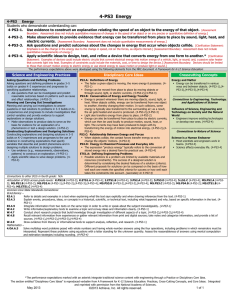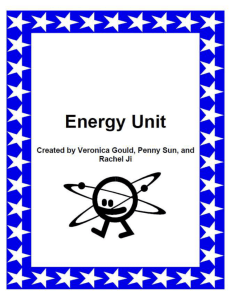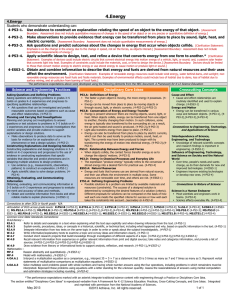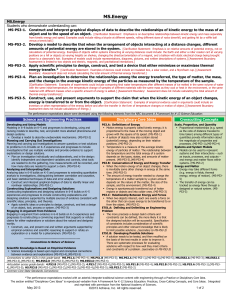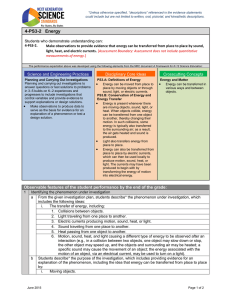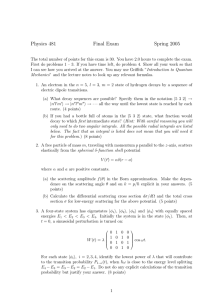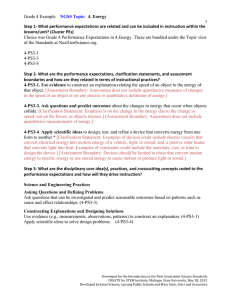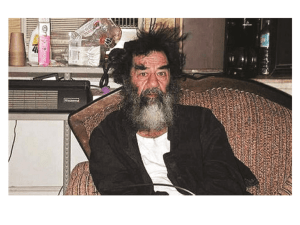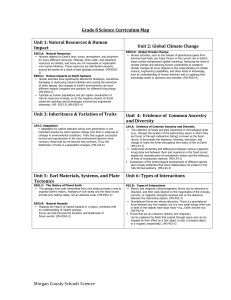Grade- 4 - Bullitt County Public Schools
advertisement
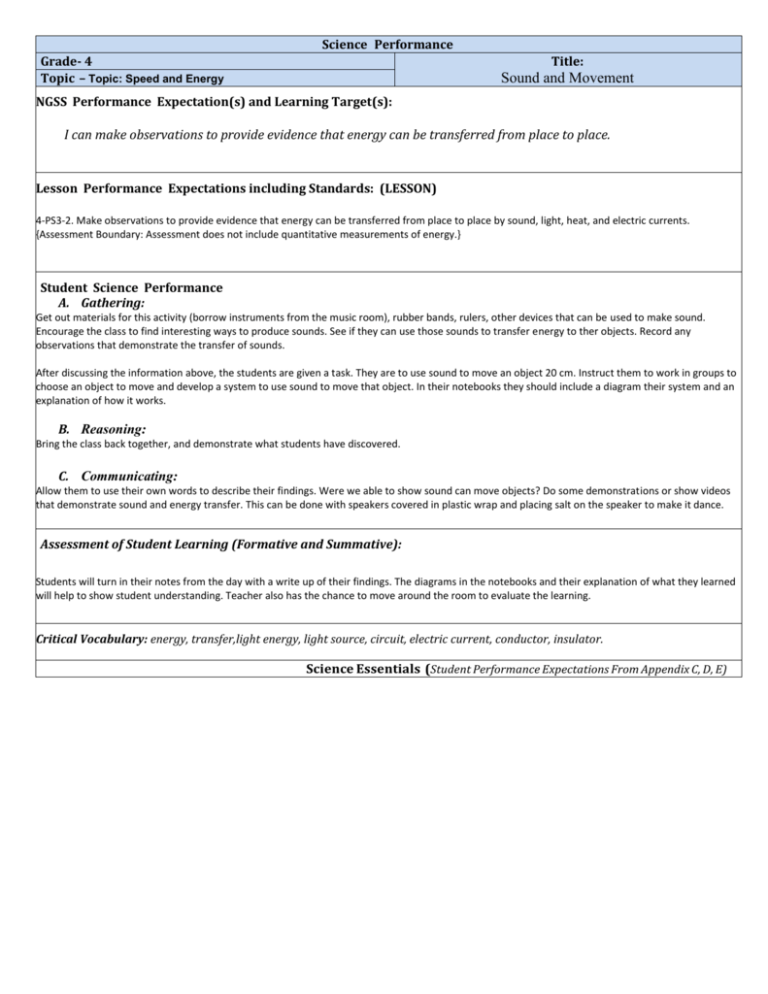
Science Performance
Grade- 4
Topic – Topic: Speed and Energy
Title:
Sound and Movement
NGSS Performance Expectation(s) and Learning Target(s):
I can make observations to provide evidence that energy can be transferred from place to place.
Lesson Performance Expectations including Standards: (LESSON)
4-PS3-2. Make observations to provide evidence that energy can be transferred from place to place by sound, light, heat, and electric currents.
{Assessment Boundary: Assessment does not include quantitative measurements of energy.}
Student Science Performance
A. Gathering:
Get out materials for this activity (borrow instruments from the music room), rubber bands, rulers, other devices that can be used to make sound.
Encourage the class to find interesting ways to produce sounds. See if they can use those sounds to transfer energy to ther objects. Record any
observations that demonstrate the transfer of sounds.
After discussing the information above, the students are given a task. They are to use sound to move an object 20 cm. Instruct them to work in groups to
choose an object to move and develop a system to use sound to move that object. In their notebooks they should include a diagram their system and an
explanation of how it works.
B. Reasoning:
Bring the class back together, and demonstrate what students have discovered.
C. Communicating:
Allow them to use their own words to describe their findings. Were we able to show sound can move objects? Do some demonstrations or show videos
that demonstrate sound and energy transfer. This can be done with speakers covered in plastic wrap and placing salt on the speaker to make it dance.
Assessment of Student Learning (Formative and Summative):
Students will turn in their notes from the day with a write up of their findings. The diagrams in the notebooks and their explanation of what they learned
will help to show student understanding. Teacher also has the chance to move around the room to evaluate the learning.
Critical Vocabulary: energy, transfer,light energy, light source, circuit, electric current, conductor, insulator.
Science Essentials (Student Performance Expectations From Appendix C, D, E)
Science Practices
Asking questions
(science) and defining
problems (engineering)
Planning and carrying out
Investigations
Constructing explanations
(science) and designing
solutions (engineering)
Obtaining, evaluating, and
communicating
information
Make observations and/or measurements to produce data to serve as the
basis for evidence for an explanation of a phenomenon.
Analyze and interpret data to make sense of a phenomena.
Use evidence to construct or support an explanation.
Organize simple data sets to reveal patterns that suggest relationships.
Critique the scientific explanation for solutions proposed by peers by citing
relevant evidence about the natural and designed worlds.
Evaluate the merit and accuracy of ideas and methods.
Build and revise simple models.
Investigate to answer questions or test solutions.
Crosscutting Concepts
Cause and effect:
Mechanism and
explanation
Energy and matter:
flows, cycles, and
conservation
Ability to explain using cause and effect.
Energy can be transferred in various ways and between objects.
Disciplinary Core Ideas
PS3.A: Definitions of Energy
● The faster a given object is moving, the more energy it possesses. (4-PS3-1)
● Energy can be moved from place to place by moving objects or through sound, light, or electric currents. (4PS3-2),(4-PS3-3)
PS3.B: Conservation of Energy and Energy Transfer
● Energy is present whenever there are moving objects, sound, light, or heat. When objects collide, energy can
be transferred from one object to another, thereby changing their motion. In such collisions, some energy
is typically also transferred to the surrounding air; as a result, the air gets heated and sound is produced. (4PS3-2),(4-PS3-3)
● Energy can also be transferred from place to place by electric currents, which can then be used locally to
produce motion, sound, heat, or light. The currents may have been produced to begin with by transforming the
energy of motion into electrical energy. (4-PS3-2),(4-PS3-4) PS3.D: Energy in Chemical Processes and Everyday
Life considering the desired features of a solution (criteria). Different proposals for solutions can be compared
on the basis of how well each one meets the specified criteria for success or how well each takes the onstraints
into account. (secondary to 4-PS3-4)
PS3.D: Energy in Chemical Processes and Everyday Life
● The expression “produce energy” typically refers to the conversion of stored energy into a desired form for
practical use. (4-PS3-4)
PS3.C: Relationship Between Energy and Forces
● When objects collide, the contact forces transfer energy so as to change the objects’ motions. (4-PS3-3)
ETS1.A: Defining Engineering Problems
● Possible solutions to a problem are limited by available materials and resources (constraints). The success of
a designed solution is determined by considering the desired features of a solution (criteria). Different
proposals for solutions can be compared on the basis of how well each one meets the specified criteria for
success or how well each takes the constraints into account. (secondary to 4-PS3-4)
Modifications and
Accommodations for
students:
Follow Up
Assignment/Project/Work:
(B. Moulding, 2011) Modified/Adapted for Bullitt County Schools by Terry L. Price (2015)
